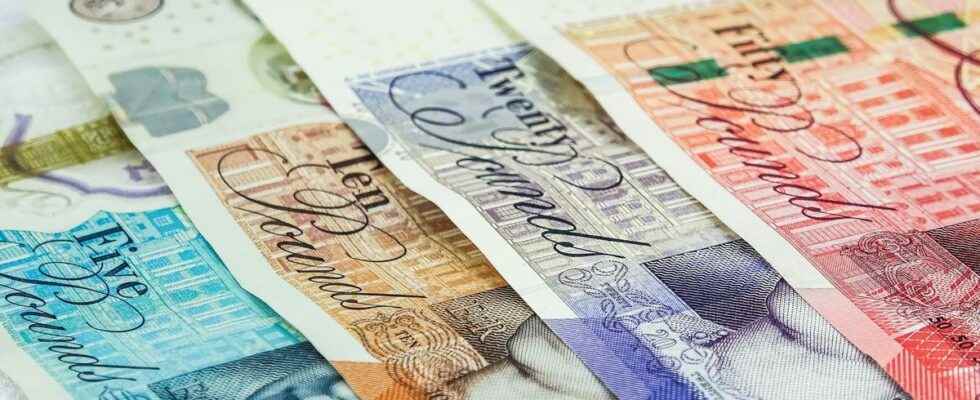Faced with a dollar that is benefiting from the resistance of the American economy, the pound has reached a historically low level since 1985.
The pound fell below the symbolic threshold of 1.10 dollars on Friday and approached its historic low, with budget announcements from London worrying investors about the health of public finances when the United Kingdom may already be in recession.
Faced with a dollar which is benefiting from the resistance of the American economy and its status as a safe haven, the pound plunged 2.56% to 1.0972 dollars around 2:25 p.m. GMT (4:25 p.m. in Paris), a level more reached since 1985. , the year of its all-time low at $1.0520.
Read alsoThe pound sterling falls below 1.20 dollars, the first for 37 years
Freeze in the cost of energy for individuals and businesses, but also lower taxes: Friday’s detailed plan to return to growth worries investors, while the flagship measure of the “mini budgetthe energy price freeze alone is expected to cost 60 billion pounds for the first six months.
“The pound is in danger“, alarmed George Saravelos, analyst at Deutsche Bank, who notes that the pound is falling even as the borrowing rates for British debt increase, “which is very rare in a developed economy“. “We are concerned that investor confidence in the UK is rapidly eroding“, he adds.
And the British economy is showing signs of weakening: the Bank of England, like the PMI index of private sector activity, predicts a recession from the third quarter.
dollar steamroller
The dizzying plunge in the pound nearly overshadowed the fall in the euro, which lost 0.86% to $0.9752 and hit a low since 2002 at $0.9737. Since the start of the year, against the steamroller of the dollar, the euro has lost 14% and the pound 18%.
Directly affected by the surge in gas prices since the start of the war in Ukraine, European economies are accumulating signs of weakness. In the euro zone, the decline in economic activity also accelerated in September in the private sector, according to the PMI index. A gloomy picture that diverts investors from the euro and the pound, despite marked rate hikes in September by central banks.
Conversely, “the United States is in a unique position, with high inflation and growth that is more persistent than elsewhere, which means that the United States Federal Reserve (Fed) has both reasons and means to raise its rates further faster and further than its peers“, explains Mark Haefele, analyst at UBS.
Annexation referendums
“The Euro-Dollar pair’s trend will not change as long as risk appetite is absent from the market due to concerns over the Ukraine-Russia conflict“, which benefits the greenback, a safe haven, abounds Francesco Pesole, analyst at ING. Russian annexation referendums have begun in areas of Ukraine wholly or partly controlled by Moscow, polls described as “simulacraby kyiv and the West and which mark an escalation of the conflict.
Read alsoEuro zone: economic contraction intensifies in September
The yen fell for its part by 0.40% to 142.97 yen, resisting a little better than the European currencies. On Thursday, the Bank of Japan maintained its ultra-loose monetary policy but the Ministry of Finance said it had intervened in the foreign exchange market to support the yen. “The move worked, but the question is for how longwarns Ricardo Evangelista, analyst at ActivTrades. “Continued support for the yen will require continued intervention for an extended period and will be a test for the resolve and capacity of the Japanese authorities.“, he judges.
SEE ALSO – Euro: risk of recession in 2023 in the event of a “total cut in Russian gas”, announces Christine Lagarde
